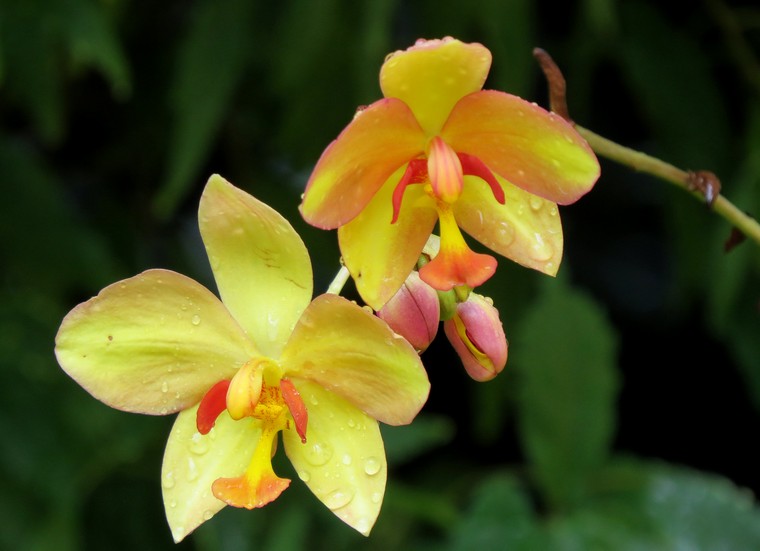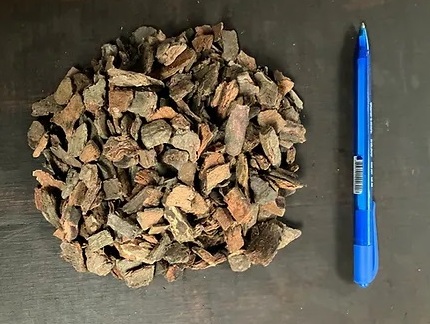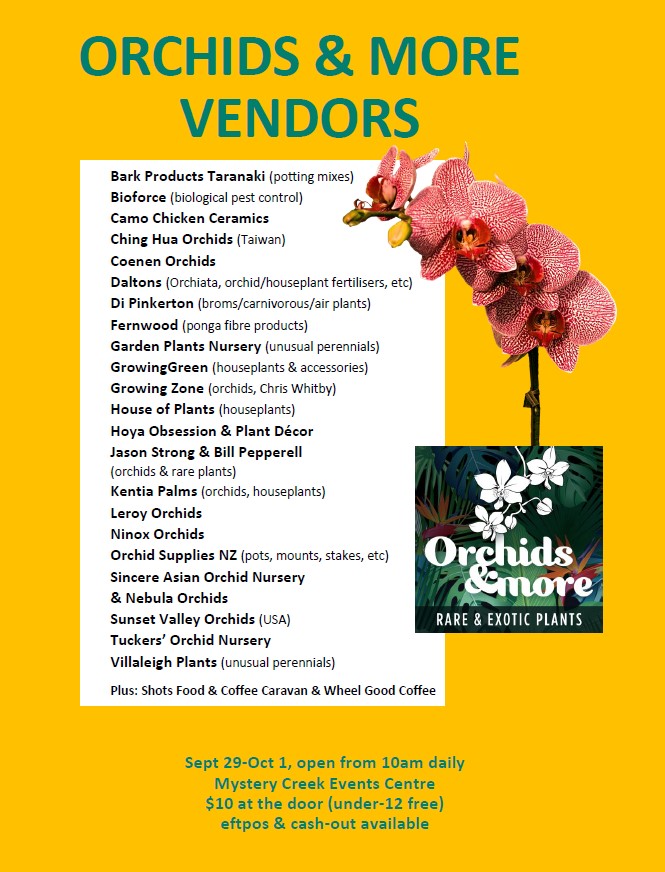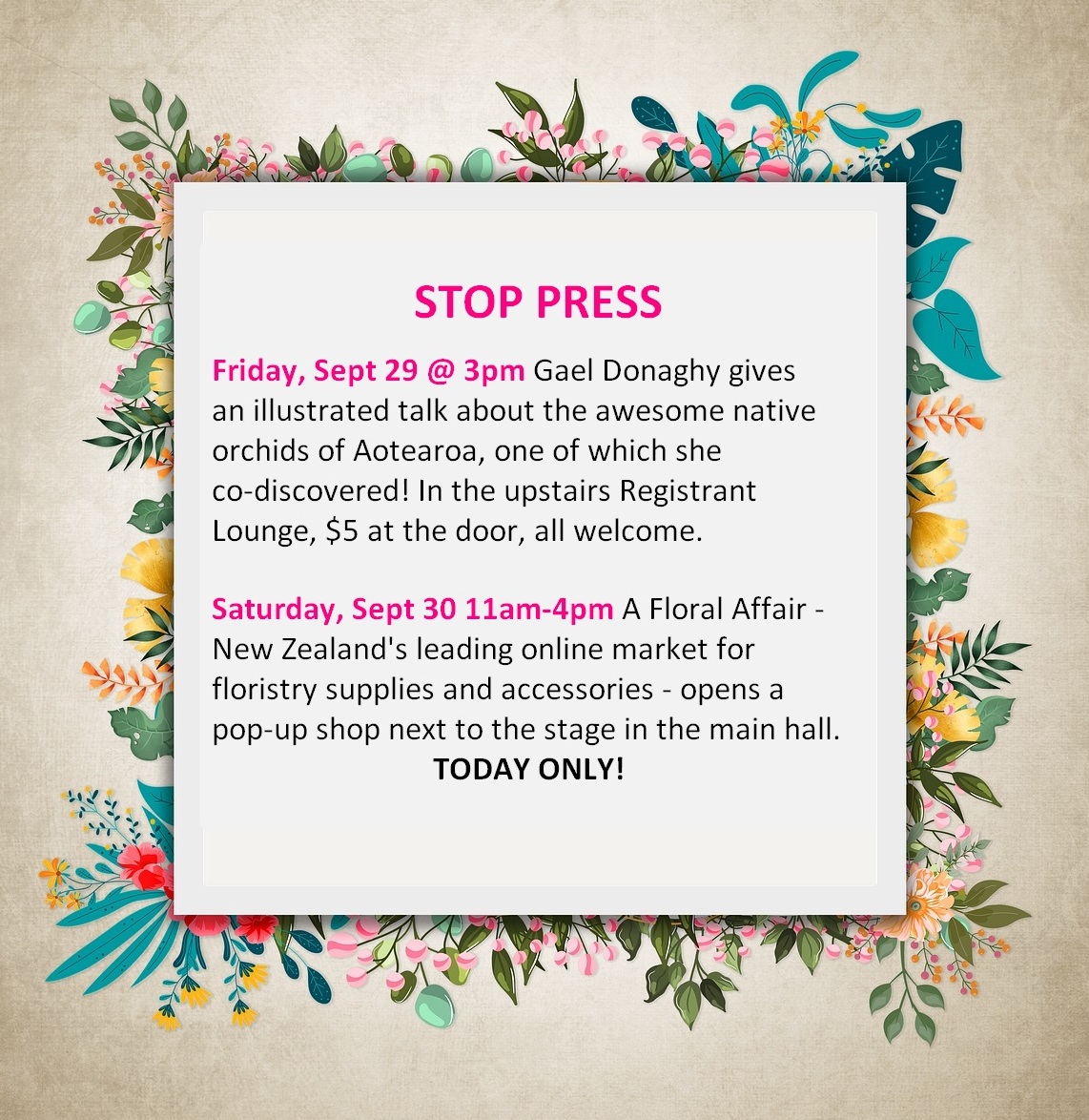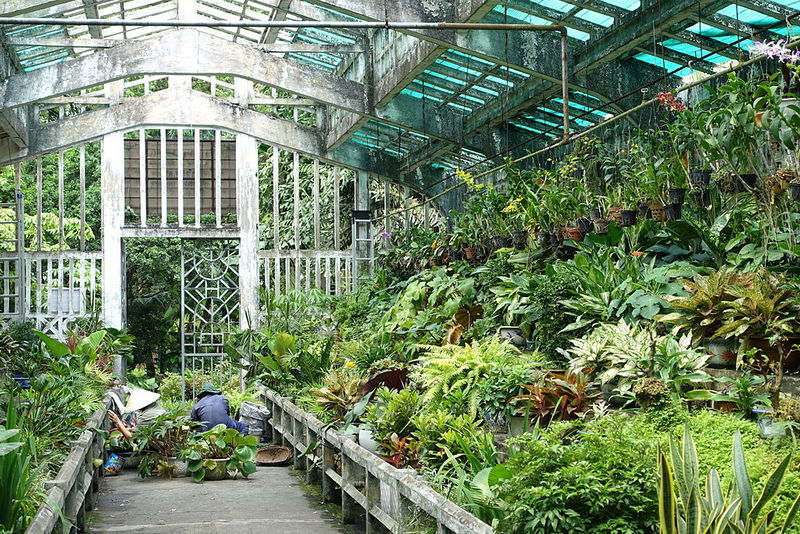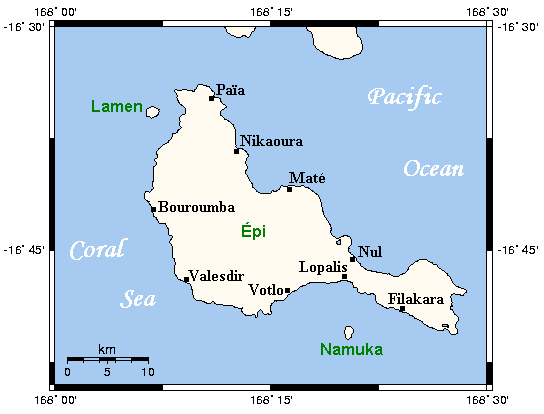By George Fuller
The essential 5 requirements for all plant growth are air, light, water, nutrition and temperature. Air, light and water are all cheap and easy to provide, the other two being relatively more expensive. We tend to take air, light and water for granted but we need to know their functions as they are very important in the growth of any plant. We cannot take any of the above in isolation as they are all so inter-related and influence each other. There is a need to understand this so that we can provide the right range of conditions from which our plants can achieve the correct balance between all factors.

Air
Air is a gas that is never still because it is influenced by temperature – any temperature change will either make it move up or down, although we can shunt it along a bit by the use of fans. Air is the agent of evaporation, a critical process for plants that occurs when the air outside the plant is drier than that inside, resulting in air and water being drawn from the plant and released into the atmosphere as vapour.
Air contains oxygen. Whenever a cell divides [ie, the plant is growing], a source of energy must be present in the form of stored carbohydrates – and for the energy in that stored condition to be released there has to be oxygen present. Air enters and leaves the plant via holes in its leaf surface – these holes form 1% of the leaf surface.
Air also contains carbon dioxide. The sun is a great nuclear reactor pelting us with radiant energy which, while we can’t grasp, we can feel as warmth. Green plants, however, can absorb radiant energy from the sun and, by combining it with carbon dioxide from the atmosphere and water that is drawn up through the plant, synthesise a solid form of energy as carbohydrate. As a consquence, the air given off by a plant has a higher ratio of oxygen than that taken in, so they are liberating oxygen of benefit to us. Moving air enhances evaopration which means water is being drawn up through the plant. The more water moving through the plant, the greater the volume of nutrients inducted with it through the roots.

Light
The sun is our basic source of energy and while we are still trying to work out how to utilise that energy more efficiently, plants have already achieved this. Plants have a unique capacity to accept radiant energy from light and synthesise carbohydrates at a rate relative to the strength of the light.
Plants can have too much light. A sign of this is paling of the leaves to increase reflection of light and thus reduce absorption. If the plant is not able to go pale enough to control absorption then it will burn.* Plants have to have as much light as they can possibly get consistent with the tissues not burning.
The bulk of a plant is water with 3-4% dry matter and a very, very small amount of that is the fertiliser we provide. The bulk of the dry matter is what the plant made for itself by trapping light and mixing it with carbon dioxide and water. There is more to feeding a plant than just feeding it through its roots. Radiant energy is synthesised into sugars, initially in a soluble form which moves through plant sap, then a series of chemical activities takes place which transforms sugars into starches. In that form they are in storage as would be found in pseudobulbs.
The nutrients taken in through the roots are vital to the health of the plant as many of the constituents of chlorophyll, the catalyst for carbohydrate synthesis, are trace elements which are needed in minute quantities but will become toxic in large amounts. If the chlorophyll is not healthy then the plant has no ability to photosynthesise carbohydrates. Therefore, nutrients must be available in the right balance.
Whatever orchid you are growing needs to be subjected to the maximum amount of light that it will tolerate without suffering physical breakdown of tissue because then it will be able to trap the energy required for flower production.
Cymbidium flower spikes are formed over the summer months and whatever happens after then will have no influence on the plant’s ability to initiate flowers. Lush green plants may not flower because they do not have the dry matter content to be induced into flower. There also has to be a differential in day and night termperatures throughout this period to initiate flowering, as most species Cymbidiums [the parents of all our hybrids] come from altitudes where the difference between day and night temperatures is relatively extreme.

Water
Water transports nutrients and maintains the turgidity of a plant. A complex system moves fluids up and down a plant which means energy made in the leaves is taken to the roots and storage organs. Trace elements are absorbed in solution through the roots and, to a lesser degree, through the leaves, therefore the more water taken out of a plant through evaporation, the more food solution will be taken in.
An action called osmosis occurs between the inside of the root and the area surrounding it. Between the two is a layer through which nutrients in solution will pass. There needs to be a stronger concentration of soluble salts inside the root to draw the weaker solution from the outside into the plant. The ratio is maintained by evaporation of water from the leaves, leaving the salts behind so the plant can maintain a higher concentration of solution within itself. As long as there is a weaker solution of nutrients surrounding the root, more will be sucked in. However, if you feed a strong solution of nutrients to a plant, the stronger solution will be outside the root and therefore water will be sucked out. The problem is worsened by virtue of the fact that water is also lost by evaporation from the container and potting mix.
Adequate watering is vital. A plant losing water excessively loses its turgidity and the leaves collapse. This is to reduce the area for evaporation to occur. Light and higher temperatures increase evaporation. Water will also influence temperature as, where water evaporates, temperatures will drop. Evaporation cools and direct spraying of water also cools.
If a plant is under stress for a long period due to too high a concentration of solution around the roots, it may be revealed as brown tips to the leaves – brown leaf tips are usually a signal that something is wrong with the roots.
Remember, your plants are talking to you all the time. They are constantly letting you know how comfortable – or uncomfortable – they are, and it is for you to learn their language.
*There are many other reasons, however, why a plant goes pale. There can be too much feed, not enough water or a combination of the two; the roots might be damaged; or it could be starving.
- George Fuller (1929-2015) was involved with the Orchid Council of NZ from its inception in 1975 until his death. At the 1990 World Orchid Conference he was presented with a Gold Medal for his services to orchids. He was curator of Pukekura Park in New Plymouth for 25 years. He was awarded the MBE in 1990 for his services to the community.
- This article, which has been abridged slightly, is reprinted from Orchids 1998 with the permission of OCNZ.

